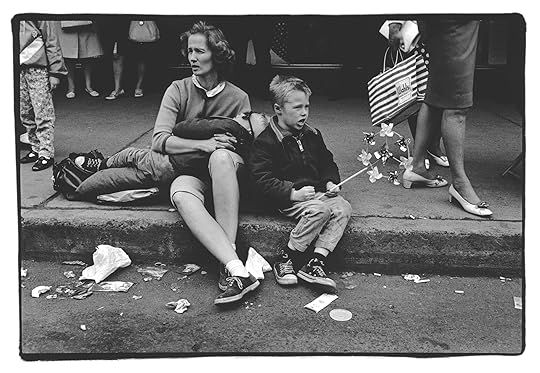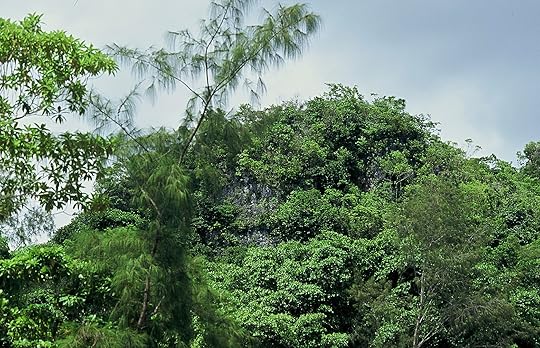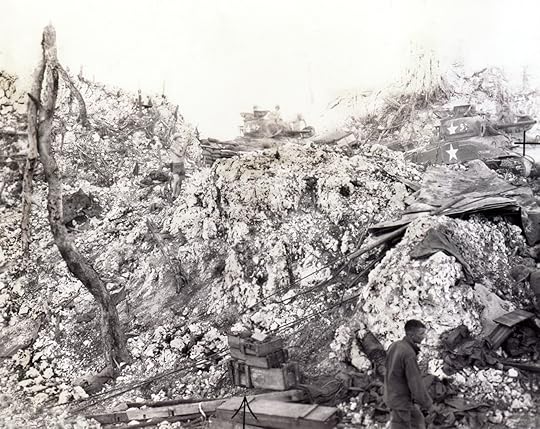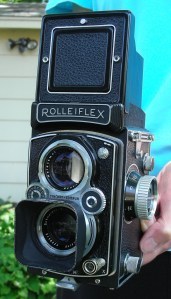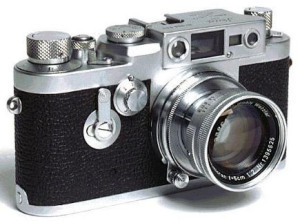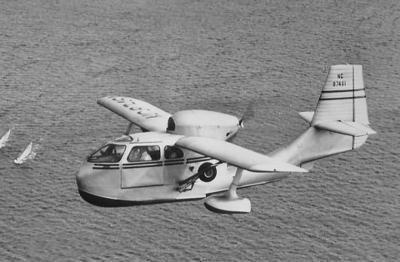D.R. Martin's Blog, page 12
February 25, 2013
The Johnny Graphic Discussion Guide Is Now Available
Many of you have suggested that I create a guide for readers who want to get the most from Johnny Graphic’s adventures. The result is this new Reader’s Guide, which is full of thought-provoking discussion questions, challenging new vocabulary, and entertaining activity ideas–all to extend the book’s experience. The Guide is suitable for classroom use or for individual readers at home. You can download the free PDF by clicking on “Reader’s Guide” in the menu above.
I welcome any comments or questions about the Guide. I hope you find it enjoyable and useful.

February 2, 2013
Another Young Photographer
As a news photographer, Johnny Graphic can only be called a prodigy. He does something on a professional level at a young age. In the real world, of course, this sort of thing doesn’t happen very often. But since the world of Johnny Graphic and the Etheric Bomb is my world, I can do just about anything there that I want–so long as I’m consistent. And I say that Johnny is a crack news lensman. So there.
Also, there’s a bit of envy involved. I was very impressed by the photographers at the newspaper where my grandfather was a sports writer. I vividly remember when I hung out in the photo department as a teenager. It was the first time I really remember smelling those unmistakable darkroom chemicals. And it was one of the things that gave me the photo bug. I knew I wanted to be a photographer. But they weren’t hiring kids, unlike the Zenith Clarion. So I undertook my own assignments as a street photographer. That means I simply photographed life on the street–people coming and going and living their lives.
Here’s one of the early shots that I took, of a mother and her sons at a downtown parade. Nobody looks too excited, but they do look real.
My particular inspiration for pursuing this kind of photography was the Frenchman Henri Cartier-Bresson. I tried really hard to imitate his style of street photography. I was never as good as him, but I’d like to think I did a decent job for someone so young. Here’s where you can see some of his famous pictures.
From time to time, I’ll post more of these shots from my youth.

January 23, 2013
Imagining Old Number One
One of the key action sequences in Johnny Graphic and the Etheric Bomb takes place on a small island in the Greater Ocean (Pacific), near the country of Rotonesia (Indonesia). This remote island is called Old Number One and it is an abandoned cassava plantation that had been owned by Dame Honoria’s father. (Cassava is the root crop used to make tapioca pudding.) Needless to say, Johnny and his friends have an exciting and dangerous sojourn on Old Number One.
Someone who read the book recently asked me how I thought up Old Number One. All of the locations in the book are based, in part, on places that I’ve visited. Zenith, for example, is modeled on the town I grew up in–Duluth, Minnesota. Old Number One is based on a tiny island in the Pacific Ocean. But what’s my connection to it?
I used to be a travel writer. And perhaps the biggest trip I took was out to Micronesia, in the western Pacific. I visited the island nations of Yap and Palau. And while I was there I had the chance to spend a weekend on the little island of Peleliu, a part of Palau. This was a particularly meaningful visit for me.
During World War II there had been a terrible battle on Peleliu between Japanese forces and the U. S. Marines and Army. My dad was an Army medic there during the battle and he would never talk to me about it. I think it must have been a horrible experience that he wanted to forget. But I was always curious about the place.
Peleliu is a hot, humid, tropical backwater full of jungle undergrowth. There is a little village and a small population living around the island. What struck me most about Peleliu, though, was its geology. The island is made of ancient sea-bottom formations that heaved up out of the ocean and created Peleliu and its ridges of coral. These “coral mountains” form the spine of the island. The caves in them provided tenacious defensive positions for the Japanese during the battle. Here’s my photo of one of the coral hills, called “Radio Hill,” as it looks now.
Here’s an old Army photo from my dad’s scrapbook of one of the coral hills after the 1944 battle, with all its vegetation stripped away by artillery bombardment. Can you see the man in front and the two Sherman tanks on the top of the hill?
I wanted these coral hills to play a part in Johnny Graphic, and they are central to Johnny’s trek across Old Number One. I wanted to convey how sharp and nasty the coral rock was. You didn’t want to fall on it, or it could cut you up.
I also wanted the heat and the bugs to play roles. When I was on Peleliu, my legs got bitten all over by black flies. The bites became infected–dozens of red dots all over my legs. I had to take two courses of antibiotics. Here’s how I put Johnny through something similar:
“Leaves and branches and thorns grabbed at the three kids at every step. Johnny took the lead and had to slash the undergrowth with a machete. Clouds of insects swarmed around, pestering and biting.”
It all comes down to the fact that we draw on the encyclopedias that are our brains when we write any kind of fiction or poetry–taking what we need from an experience here and a memory there. My visit to Peleliu was so vivid, so memorable, that I’ve always wanted to create a fictional island just like it. And the result is Old Number One.

January 11, 2013
Tricky Names
If you happen to have an unusual first or last name, you’ve probably run into people who mispronounce it. In place of a first name I use my initials, D. R. (A lot of writers do.) When I’m talking to a stranger on the phone I have an especially hard time communicating my name. I have to slowly say, “D period R period.” Because otherwise they sometimes think my first name is “Dear.” Or people will call me “Doctor”–because my name has the same letters as the title “Dr.” (Because of that I often get junk mail addressed to Mr. Dr. Martin.)
In Johnny Graphic there are a few names that folks might pronounce in different ways. Here’s a list of some of them and how I pronounce them.
First, there’s Nina Bain. Though some people might pronounce her name as NEEN-ah, I pronounce it NINE-ah–rhyming with China.
Dame Honoria’s name is pronounced: Ah-NOR-ee-ah. The H is silent.
The Steppe Warrior Burilgi’s name is pronounced with a hard g sound, Burr-ILL-gee.
The female Steppe Warrior Checheg’s name is pronounced CHE-chig.
Bao, the little girl ghost, is simply Bow…as in, “The rock star took a bow.”
Of course, if you want to pronounce these names differently, it’s fine with me. The important thing is that you enjoy these characters and their adventures.

January 4, 2013
Writing Book 2: Sometimes You Need a Road Map
When I first started writing Johnny Graphic and the Etheric Bomb, I knew that telling Johnny’s story would take at least three books. And now that JGEB is out in the world as an e-book and a print-on-demand book (just click on the sidebar to check it out), it’s time to move on to Book 2.
Even when I was writing JGEB, I knew in a general sense what kind of adventures Johnny would have in the second book. It would involve a terrible outbreak of zombie attacks in the Royal Kingdom, almost certainly due to the main villain of JGEB. (I won’t mention his name, to avoid a major spoiler here.) Johnny, Nina, and the rest would be called to help deal with this infestation of zombies. After all, they had a great deal of experience fighting our bad guy in the first book. Of course, they face many obstacles and dangers along the way. I knew what some of the major incidents in the book would be, and approximately where Johnny would end up.
But unlike some writers who create their books with no written plan, improvising as they go along, I like to have an outline—a road map, you might say. So I wrote down brief descriptions of chapters, from the beginning of Book 2 to the end. Then I used it as a step-by-step guide, writing chapters based on this road map. But the funny thing is that as you write the book, your ideas change and the road shifts directions. So the road map has to change.
For instance, I wrote a couple of chapters from the point of view of Johnny’s sister, Mel. But Mel–a kind of serious personality, as readers of JGEB will know–wasn’t very interesting. So I had to reassign those chapters to the little girl ghost Bao, who’s a lot more fun.
Right now I’ve written 30,000 words of the first draft of Book 2. I’m almost halfway through, and I expect my road map to shift a few more times before I’m done. And there will be much more rewriting after the first draft is finished. (Remember, unless you’re very good, your first draft is just a place to begin.)
So I guess my advice to anyone who’s writing a novel or thinking of writing one is this: Be sure to lay out a road map for your book. It will make writing it much easier. But don’t be afraid to shift course when some new scenery beckons.

November 27, 2012
Johnny Graphic, Shutterbug
They always tell authors to write about things that they know. And in Johnny Graphic’s case, one of the personal interests I give him relates to an old, beloved hobby of mine: Photography.
I’ve been a dedicated lensman since I was a kid. I started out with a hand-me-down Kodak box camera (that took dreadful, fuzzy pictures). Then I received the Christmas gift of a pretty good 35mm camera. Since then I’ve owned dozens of cameras. I’ve taken tens of thousands of pictures and sold quite a few of them for magazines, newspapers, books, and advertising. I’ve put on half a dozen photo shows in art galleries.
So when I started writing down who Johnny was, I wanted him to be a real camera nerd. Not only a very precocious news photographer, but a kid who absolutely loves his gear. His Zoom 4×5 press camera is based on the famous Speed Graphic camera that you’ve probably seen in movies. Johnny’s wielding that camera on the cover of the book. It’s a great weapon, too.
In his next adventure, Johnny Graphic and the Zombie Plague, he’s moved on to a smaller, quicker camera, a twin-lens reflex that I call a Ritterflex. This is kind of what it looks like.
The Ritterflex is a lot smaller than the Zoom and it has the huge advantage of giving Johnny the ability to shoot 12 photos before reloading new film, instead of just two. It will be a boon to him as he’s hunting bog zombies in the northern part of the Royal Kingdom.
For the third book (still without a title), Johnny will be using a 35mm camera something like the old-style Leica rangefinder, which will give him even more flexibility and mobility–and let him shoot 36 pictures without reloading. This model is the Leica IIIg.
And if Johnny should live to a ripe old age, he’ll have more great 35mm cameras and digital cameras to look forward to.

November 21, 2012
New Goodreads Giveaway
Just a heads-up for anyone who missed out on the Goodreads Johnny Graphic giveaway in September…
I’m doing another giveaway on Goodreads through January 2. Three books this time, all autographed–with wider availability, including Canada, the U.K., Australia, and New Zealand. The giveaway is listed under both “Middle Grade” and “Children’s” books.
If you don’t have your copy of Johnny Graphic yet, be sure to sign up.

November 2, 2012
Children’s Bookwatch Gives Johnny a Big Thumbs Up
The Children’s Bookwatch, an online publication of the Midwest Book Review, just did a review of Johnny Graphic and loved it. This is a really good site for folks looking for book recommendations for young readers. Here’s what their reviewer had to say:
Newspaper photography gets a tad more difficult when sometimes your subjects are dead. Johnny Graphic and the Etheric Bomb is a novel drawing from classic pulpy style of the 1930s, following Johnny Graphic, aspiring photographer, as he discovers ghosts covering every level of his desired career path. Finding ghosts friendly and hostile, he rushes to protect his sister from the latter, a task more difficult than he knows. Johnny Graphic and the Etheric Bomb is a strong pick for young adult readers, highly recommended.
Check out Children’s Bookwatch here.

October 31, 2012
Johnny’s Government
With the election coming up next week here in the U. S., I thought I would explain a little about how the political system in Johnny’s country–the Plains Republic–is different.
If you’ve looked at the “Johnny’s Geography” link in the menu above, you’ll see that Johnny’s continent has shattered into seven countries. What would have been the U. S. is four countries and what would have been Canada is two. (Mexico in Johnny’s world is called Tierra del Sol.) Because of this, I wanted the Plains Republic to have a different form of government than the U. S. now has–a parliamentary system instead of a presidential system. As you may know, a parliamentary system is the kind of government that exists in Great Britain and Canada.
A parliamentary system has only one elective body at the national level–called the parliament. When elections are held the party that wins the majority of seats in the parliament gets to form the national government. For example, the head of the majority party (who must be a member of the parliament) becomes the prime minister. And he or she selects members of parliament from that party to head the various ministries of government.
The type of government we have in the U. S. is called a presidential system. The president is elected independently of the Congress. Elections for president are held every four years. After this year’s election, the next presidential election will be in 2016.
Democracies have flourished with both types of systems. But which do you think might best serve its citizens–parliamentary or presidential ?

October 16, 2012
Why Flying Boats?
Not too long ago a friend of mine wondered why, in Johnny’s world, they travel around just in flying boats. Why no ordinary airplanes that land on normal runways with rubber tires?
Well, I never said in the book that there weren’t airplanes like that. But in the 1920s and 1930s, in the real world, most of the great international air routes were handled by flying boats much like the Como Eagle that Johnny flies in. These magnificent machines started going out of style and by the 1950s weren’t much used for passenger travel. So they’ve come to represent a time when international flight was more glamorous and exciting. At least that’s how I feel. I mean, how much cooler is a Como Eagle (based on the famous Pan Am Clipper of the 1930s) than a 757 or an Airbus?
And there’s another, more personal reason why I’m fond of these great old aircraft.
When I was just a little kid my parents and I would go on fishing trips. On a few of those trips we flew into remote lakes that could only be gotten to by air. And this is one of the aircraft we flew on.
It’s called a Seabee and it’s a flying boat, though a small one. And it’s a flying boat because the bottom of the aircraft is actually a boat hull.
Our pilot was a man named Warren LaPanta and I was agog at how busy he got during the incredibly noisy, bouncy takeoffs–madly pumping pedals, gripping the yoke (steering wheel) in one hand, and turning a crank above his head with the other. After flying with Warren several times, I determined that bush piloting was the dream career for me. Of course, I changed my mind a year or two later. Still, those four or five round-trips with Warren–among the earliest airplane rides of my life–remain vivid in my memory.
One thing’s for sure. That little rattletrap Seabee cemented my love of flying boats forever.


